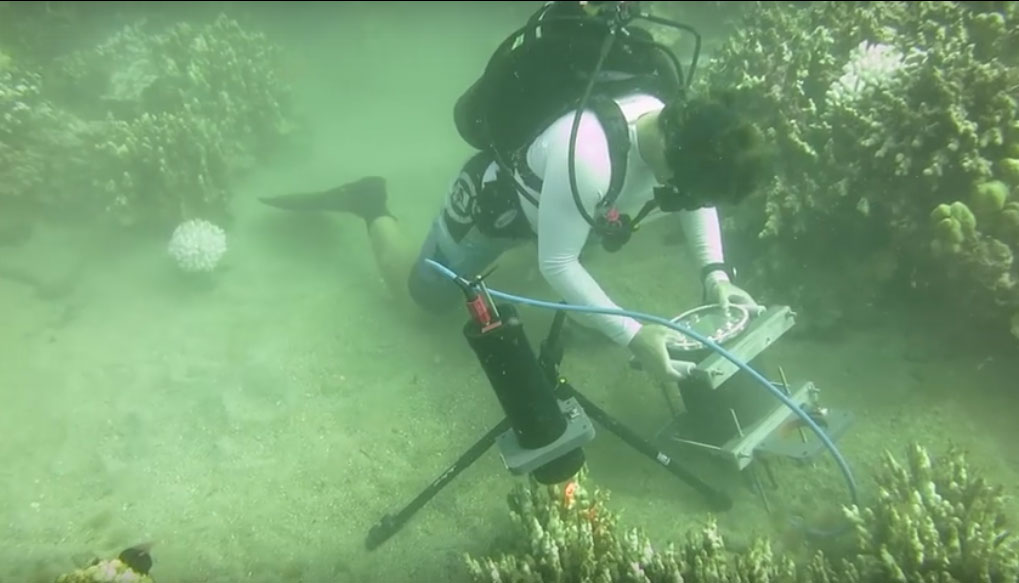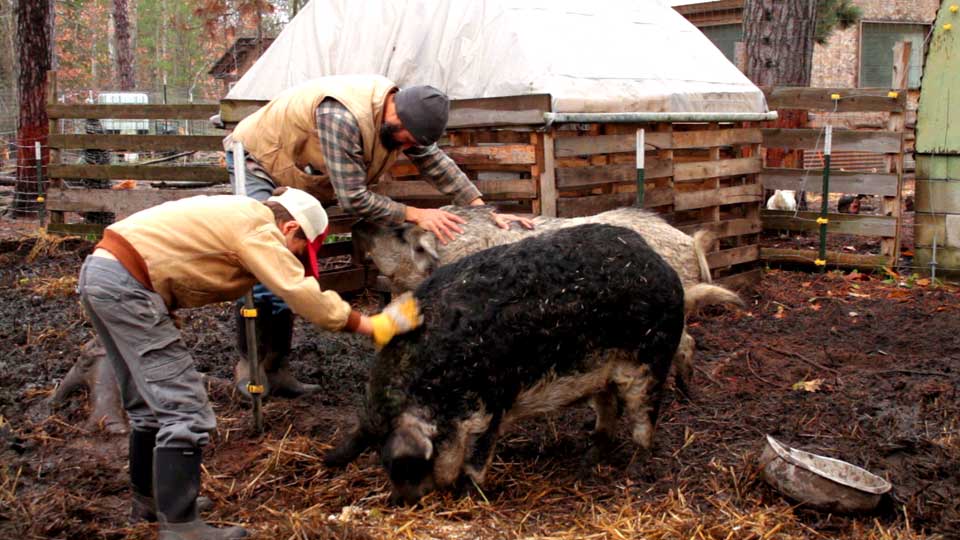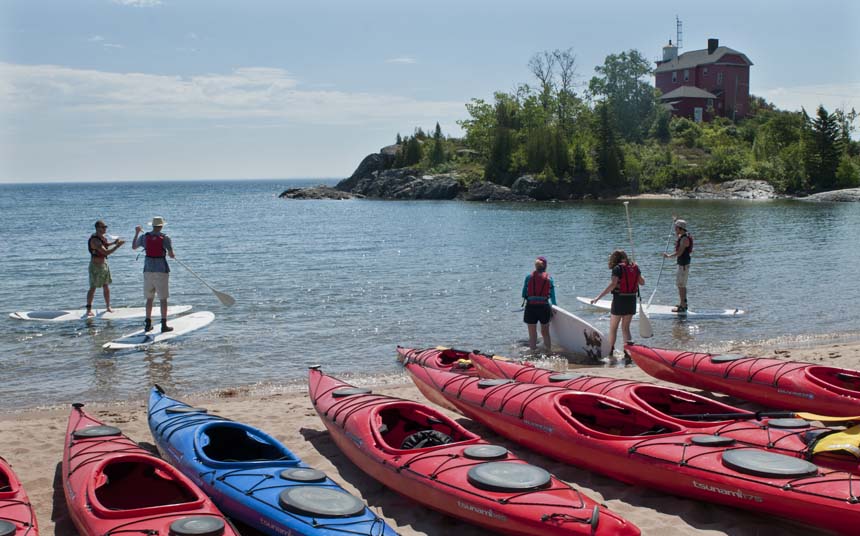Protecting the Great Lakes

Beach goers play in the sand as an ore boat passes by on Lake Superior in Marquette, MI. (photo by Ron Caspi)
The Great Lakes have always been a source of pride to the states that border them. But this raises a very good question: why are so few people willing to come to their defense?
Earlier this year, local blog “Word on the Street” posted an April Fools article about making a deal to pipe water from Lake Superior all the way to Arizona to keep their golf courses clean. And while many realized the post was all in good fun, people who didn’t catch on where in an uproar, refusing to let such a thing happen to their lake. But this response left some people wondering, if people are so protective of the Great Lakes, why isn’t there more support for the organizations and groups trying to save them?

View to the east of Lake Superior from the top of Sugarloaf mountain just outside Marquette in Michigan’s Upper Peninsula. (photo by Ron Capsi)
According to the Environmental Protection Agency (EPA), the Great Lakes form the largest surface freshwater system on Earth, accounting for nearly 20% of the world’s freshwater supply. This coupled with the fact that over 30 million people call the Great Lakes basin home, makes it hard to believe that the problems facing the lakes haven’t received more attention. It wasn’t until 1969 when the Cuyahoga River, which flows through Cleveland, Ohio to Lake Erie actually caught on fire due to the amount of pollutants in the water, that the pollution occurring in the lakes caught national attention. Shockingly enough, there had been twelve more fires before this one, one in 1952 being the largest, causing over $ 1 million in property damage.

The great lakes host a large number of coal-fired power plants, one of the biggest polluters on the lakes. (photo Ron Caspi)
But there are even more problem areas on the Great Lakes. There have been a number of Areas of Concern (AOCs) on the Great Lakes as defined by the U.S.-Canada Water Quality Agreement, an initiative created by the U.S. and Canada to clean up the lakes. According to the Great Lakes Information Network (GLIN), to be considered an AOC an area must contain one or more beneficial use impairments. This means a change in the chemical, physical or biological integrity of a water body sufficient to cause any number of problems, such as beach closings, restrictions on fish and wildlife consumption, degradation of fish and wildlife populations, and many more. In 1987, the Water Quality Agreement identified 43 Great Lakes AOCs. To date, only 3-4 of them have been delisted. The pollutants that damage the lakes take many forms, ranging from contaminated runoff, wastewater and sewage, acid rain, and even an overabundance of dirt and sedimentation in the lakes and streams.

Lake Superior at sunset in Michigan’s Upper Peninsula. (photo by Ron Caspi)
At the end of the day, few people can deny that the Great Lakes are a source of pride and enjoyment to those who live near them. But over the years, their condition has grown worse. Whether through industry or agriculture, pollution has been slowly eating away at their natural beauty. And while there are organizations like the Great Lakes Information Network and the Environmental Protection Agency trying their best to help, the fact remains that it falls largely to us to try and change things. As cliche as it may sound, even the smallest bit of effort can make a difference.














You must be logged in to post a comment Login